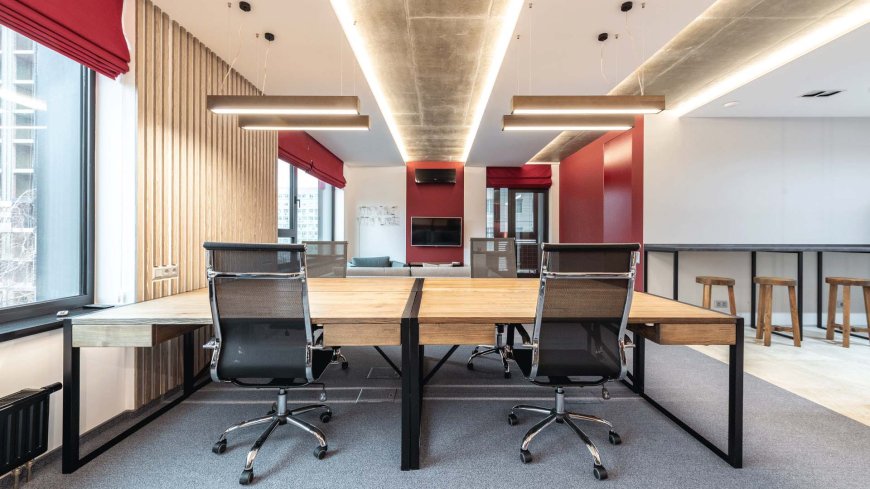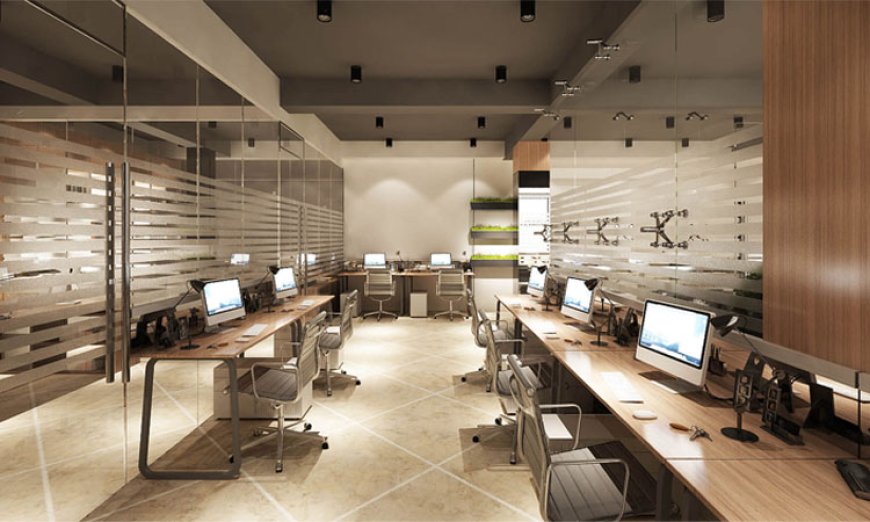The Role of Technology in Modern Office Interior Design

Technology has become an integral part of modern office interior design, transforming workplaces into efficient, dynamic, and interactive environments. The integration of advanced technologies in office design enhances productivity, improves communication, and creates a more engaging and flexible work experience. This article delves into the various ways technology influences office interior design and the benefits it brings to the contemporary workplace.
Smart Office Systems
1. IoT and Automation
The Internet of Things (IoT) has revolutionized office design by enabling the automation and control of various office functions. Smart office systems use IoT devices to manage lighting, temperature, security, and other building operations seamlessly. For example, occupancy sensors can adjust lighting and HVAC systems based on room usage, enhancing energy efficiency and comfort.
2. Connected Workspaces
Connected workspaces leverage IoT technology to create cohesive and responsive office environments. Employees can control their workspace settings, such as lighting and climate, through their smartphones or other connected devices. This personalization improves comfort and productivity, catering to individual preferences and needs.
3. Smart Desks
Smart desks equipped with sensors and connectivity features can monitor and adjust height and ergonomics based on user preferences. These desks can also provide reminders for taking breaks and maintaining healthy postures, promoting employee well-being and productivity.
Enhanced Communication and Collaboration
1. Video Conferencing Solutions
Video conferencing technology has become essential in modern offices, especially with the rise of remote work and hybrid models. Advanced video conferencing systems offer high-definition video and audio, screen sharing, and real-time collaboration tools. These systems facilitate seamless communication between in-office and remote employees, fostering teamwork and connectivity.
2. Collaboration Software
Collaboration software such as Microsoft Teams, Slack, and Trello has transformed the way teams work together. These platforms provide a centralized space for project management, communication, and file sharing. Integrated with office design, collaboration software supports flexible work arrangements and enhances productivity.
3. Interactive Whiteboards
Interactive whiteboards are powerful tools for brainstorming and presentations. These digital boards allow multiple users to write, draw, and interact with content in real-time, whether they are in the same room or participating remotely. They enhance creativity and engagement during meetings and collaborative sessions.
Flexible and Adaptable Workspaces

1. Hot Desking and Desk Booking Systems
Hot desking, supported by desk booking systems, allows employees to choose their workspace each day based on availability and personal preference. Desk booking software enables employees to reserve desks in advance, ensuring they have the necessary space and resources for their tasks. This flexibility optimizes space utilization and supports a dynamic work environment.
2. Modular Furniture
Technology has enabled the development of modular furniture that can be easily reconfigured to suit different needs. Modular desks, partitions, and seating arrangements allow offices to adapt quickly to changes in team sizes and project requirements. This adaptability enhances the functionality and versatility of the workspace.
3. Virtual and Augmented Reality
Virtual reality (VR) and augmented reality (AR) technologies offer innovative solutions for office design and planning. VR can create immersive simulations of office layouts, allowing designers and stakeholders to visualize and interact with the space before implementation. AR can enhance real-world environments with digital information, aiding in space planning and interior design.
Health and Well-Being
1. Ergonomic Solutions
Technology-driven ergonomic solutions, such as adjustable desks and chairs, help create healthier work environments. Smart furniture can track and adjust to users' ergonomic needs, reducing the risk of musculoskeletal disorders and improving overall comfort.
2. Air Quality Monitoring
Indoor air quality is crucial for employee health and productivity. Smart air quality monitors can track levels of pollutants, humidity, and temperature, providing real-time data to optimize the office environment. These systems can trigger ventilation adjustments to maintain optimal air quality, ensuring a healthier workspace.
3. Wellness Apps
Wellness apps integrated into office environments promote physical and mental well-being. These apps can offer features like guided meditation, exercise reminders, and stress management tools. Integrating wellness technology into office design supports a holistic approach to employee health.
Sustainability
1. Energy Management Systems
Smart energy management systems use sensors and analytics to monitor and control energy usage in office buildings. These systems optimize lighting, HVAC, and other energy-consuming operations, reducing energy consumption and costs. Sustainable office design incorporates these technologies to achieve energy efficiency and environmental responsibility.
2. Sustainable Materials and Technologies
Technology enables the development and use of sustainable materials in office design. Innovations such as recycled building materials, energy-efficient lighting, and water-saving fixtures contribute to a greener office environment. Incorporating these technologies supports sustainability goals and reduces the office’s carbon footprint.
3. Waste Reduction
Technology can help manage and reduce office waste through smart waste bins that track and sort recyclables and compostables. Digital document management systems reduce paper waste by promoting electronic communication and storage. These technologies contribute to a more sustainable and efficient office environment.
Conclusion
Technology plays a pivotal role in shaping modern office interior design, offering solutions that enhance productivity, communication, flexibility, health, and sustainability. From smart office systems and advanced communication tools to ergonomic solutions and energy management systems, technology-driven office design creates dynamic and efficient work environments. By embracing these technologies, businesses can foster innovation, improve employee well-being, and achieve their sustainability goals. The future of office design lies in the seamless integration of technology, creating workspaces that are not only functional and productive but also engaging and sustainable.
What's Your Reaction?




















